10 Best Patient Communication Tools Solutions for Healthcare
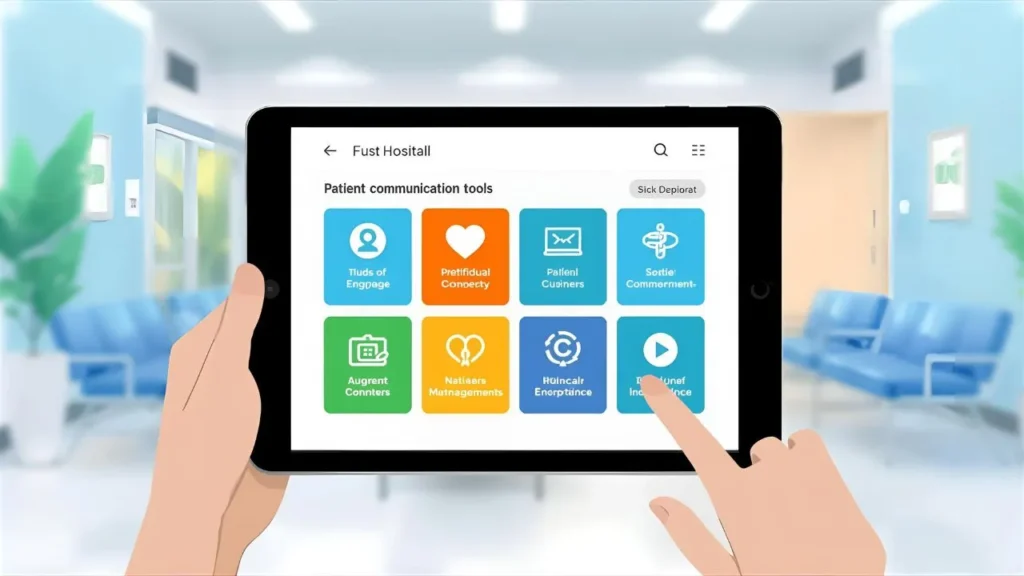
Healthcare is changing fast. Physicians and patients should be able to communicate with each other in a more appropriate manner. Long gone are the days when phone calls and paper forms were sufficient. Nowadays, communication tools with patients can ensure the ease of communication between doctors and patients. These e-tools simplify healthcare for all. Patients are able to make queries at any time. Physicians are able to exchange test results rapidly. Time is saved and stress is eliminated. The appropriate patient-communication tools might result in a significantly improved experience of healthcare.
In this guide, we shall examine the 10 best patient communication tools that are present today. We will discuss what they are, how they are, and which one of them fits you.
What are Patient Communication Tools?
The AI tools of patient communication are digital applications that assist physicians and patients in communicating with each other. Imagine that they are healthcare-specific apps or websites. The tools are like a connection between you and your doctor. You can also use these platforms to send messages, ask questions, or get updates, even without waiting to get a phone call or visiting the office. Some tools allow you to video call your doctor, make appointments, or even have a reminder about your medicines.
The best part? These are tools of communication with patients, which operate on your phone, tablet, or computer. You are able to use them at home, work, or anywhere with the internet. This renders health care more convenient to busy people. The tools are currently used in numerous hospitals and clinics. They are used to minimize the number of phone calls, waste less paper, and ensure that important health information is not lost. To patients, it is improved responses and care.
Why Look for Patient Communication Tools?
The following are the key reasons why patient communication tools are significant:
- Faster Communication: Your doctor does not make you wait on hold to give you answers, which he can provide in minutes and not days.
- Better Care: Post symptoms, photos, or concerns directly to the doctors so that they can assist you quickly.
- Save Time: Eliminate unnecessary visits to the office with simple questions or prescription refills.
- Keep Records: Your messages and health are all stored in a single safe location.
- More Convenience: Call your medical staff at any time, even during off-hours.
Top 10 Patient Communication Tools
1. MyChart
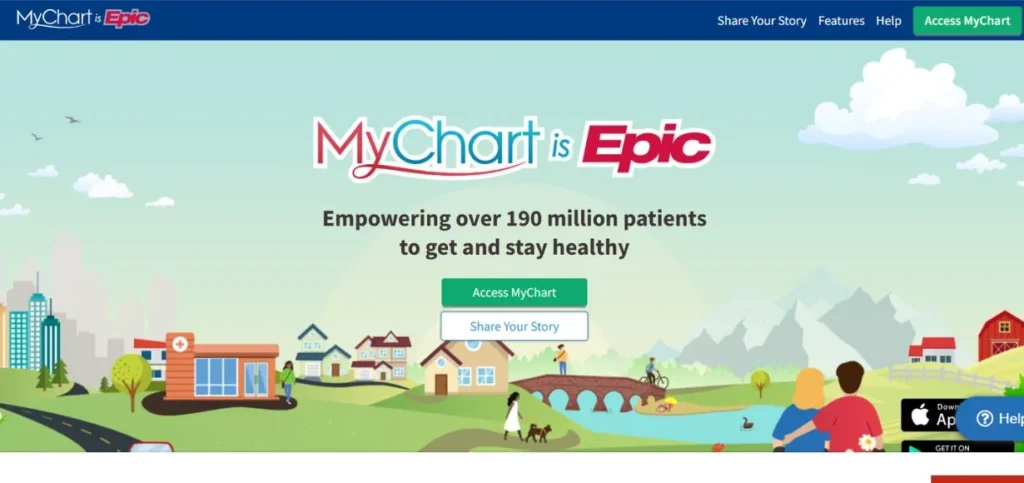
MyChart is one of the most popular patient communication tools used by major hospitals. MyChart is among the most sought-after patient communications tools that several leading hospitals and clinics in the country have adopted. This is a platform created by Epic that links patients with their medical facilities in a style that is easy to use. MyChart is used by millions of patients who need to manage their health, communicate with physicians, and keep up with their healthcare.
The platform is connected to the electronic health record system of Epic, which makes it a complete solution to engage with patients. MyChart has both web and mobile application versions, which guarantee patients access to their health information at all times and irrespective of location. The platform can be characterized by the level of reliability and a acertainh functionality.
Key Features:
- Secure patient messaging
- Extensive health documentation.
- System of appointment scheduling.
Pros:
- Widely accepted platform
- All-purpose health dashboard.
- Strong security measures
Cons:
- Poor customization opportunities.
- Requires Epic integration
- Can feel overwhelming
Best For: Hospitals
Pricing: Free for patients
Website: https://mychart.com
2. Cerner HealtheLife
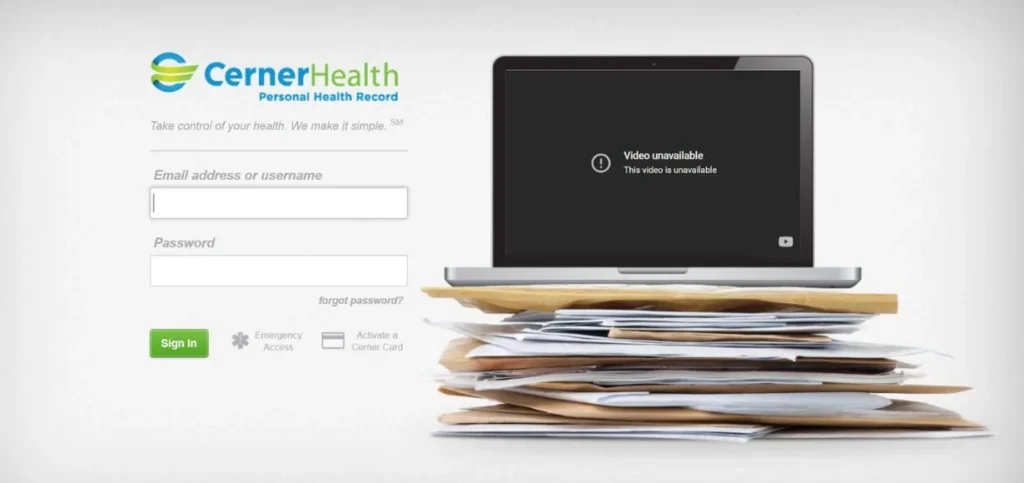
Cerner HealtheLife is an effective platform for patient communication tools that aims to provide patients with full control of their health records. This portal provides patients with a wide range of opportunities, enabling them to view their medical history, interact with their healthcare professionals, and manage their health process in a single place. The site is highly user-friendly and has been optimized to provide an excellent user interface.
Cerner HealtheLife is an enhancement to the PowerChart electronic health record system of Cerner and is designed to have a data-flow connection between the patients and the provider. The site is in various languages and has accessibility options for users with diverse requirements. It is especially good at offering health analytics and trends in detail.
Key Features:
- Full access to health records.
- Portal of communication between the providers.
- Health trend analytics
Pros:
- Detailed health insights
- Design of an easy-to-use interface.
- Language support (Multi-language).
Cons:
- Requires the Cerner system
- Poor third-party connections.
- Steep learning curve
Best For: Clinics
Pricing: Free for patients
Website: https://cernerhealth.com/
3. Klara
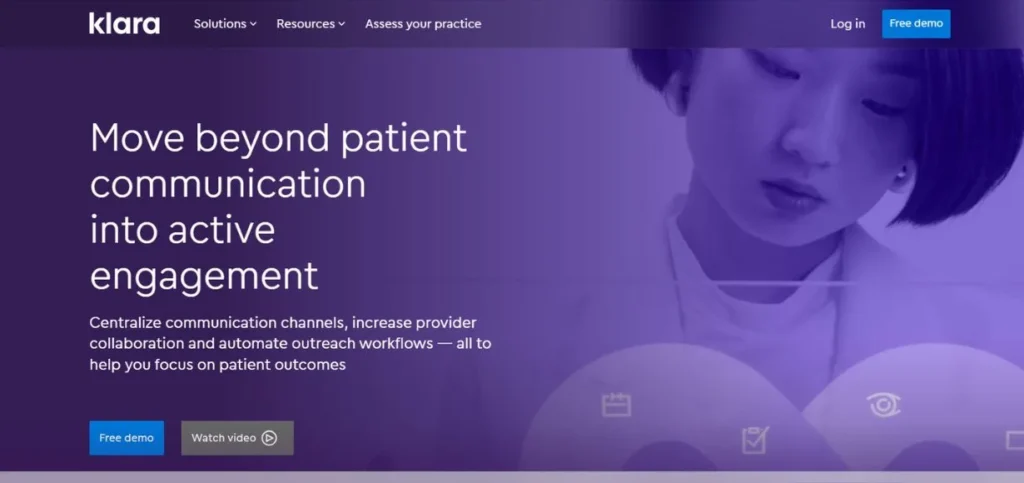
Klara is one of the most effective tools for communicating with patients due to its emphasis on efficient communication between healthcare providers and patients. This innovative platform has been focused on simplicity and speed, and it is not hard to exchange information between patients and medical staff through it within a short time. Klara contains such features as automated appointment reminder, secure messaging, and patient intake forms, which will decrease administrative load on healthcare practices.
The platform is connected to popular electronic health record systems and provides powerful analytics to assist practices in becoming more efficient in their communication. Klara is a mobile-first design that will allow patients to interact with their healthcare providers with ease on any device.
Key Features:
- Efficient communication platform.
- Automated appointment notifications.
- Digital intake forms
Pros:
- Fast message delivery
- Easy practice integration
- Modern interface design
Cons:
- Limited advanced features
- Newer platform option
- Requires staff training
Best For: Practices
Pricing: Starts at $79/month
Website: https://klara.com
Don’t Miss: Top Healthcare Software Development Companies
4. Solutionreach
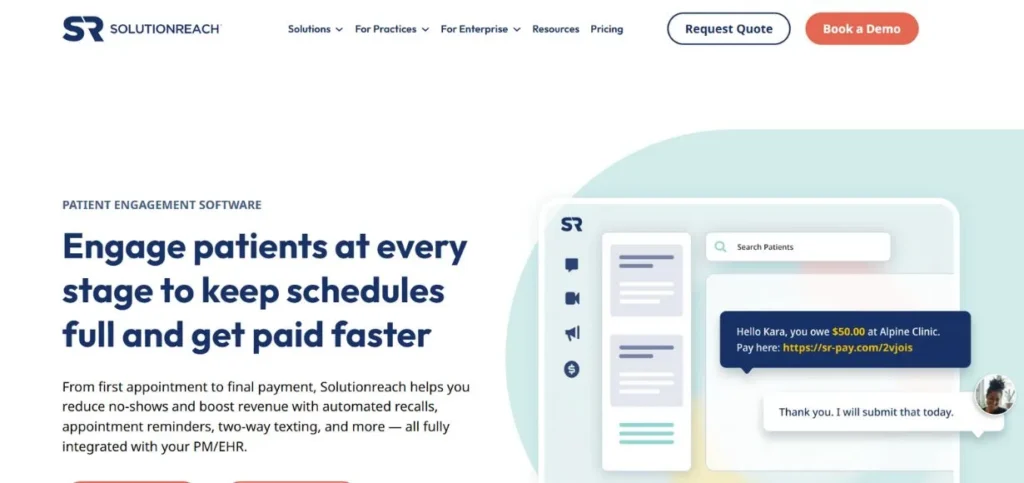
One of the most extensive patient communication tools that exists in the market is Solutionreach, and it is a fully featured patient engagement platform encompassing all the facets of healthcare communications. The solution is a combination of automated messages, booking reminders, patient feedback, and reputation management. The dental practices and specialty clinics are the most popular with Solutionreach, as this app offers powerful automation and flexible communication templates.
The site has both online and mobile applications that will make the patients remain in touch with their healthcare services, irrespective of the device they prefer to use. The analytics dashboard of Solutionreach gives useful information on the nature of communication with patients and their engagement rates.
Key Features:
- Full platform of engagement.
- Automated communication processes.
- Collection of patient feedback.
Pros:
- Comprehensive feature set
- Well-developed automation.
- Excellent customer support
Cons:
- Higher pricing tiers
- Complex initial setup
- Many features unused
Best For: Specialists
Pricing: Custom pricing available
Website: https://solutionreach.com
5. SimplePractice
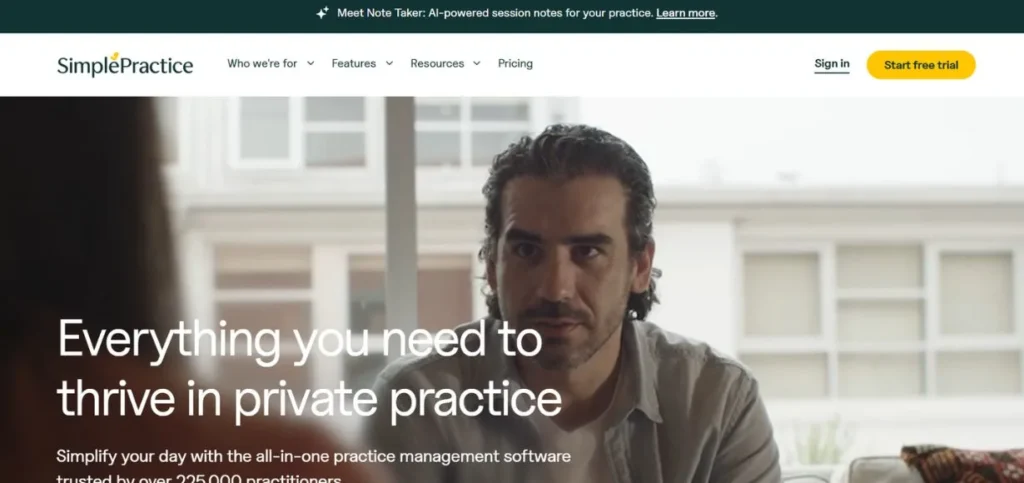
SimplePractice has become one of the most popular patient communication tools that was created with mental health professionals, therapists, and small healthcare practices in mind. This is an all-in-one tool that will integrate practice management with patient communication capabilities, so it will be suitable in the case of a small group or a solo practitioner. SimplePractice is an affordable solution that has secure messaging, appointment scheduling, billing integration, and Telehealth in a single package.
The site has been credited with a clean, intuitive interface that does not bombard the user with too many features. SimplePractice also has strong privacy and security features to guarantee HIPAA compliance, which is essential in mental health practices.
Key Features:
- Combined practice management.
- Secure telehealth platform
- Automated billing system
Pros:
- Complete solution offered.
- Mental health focused
- Low-cost pricing model.
Cons:
- Poor customization options.
- Basic reporting features
- Small practice focus
Best For: Therapists
Pricing: Starts at $39/month
Website: https://simplepractice.com
6. DrChrono
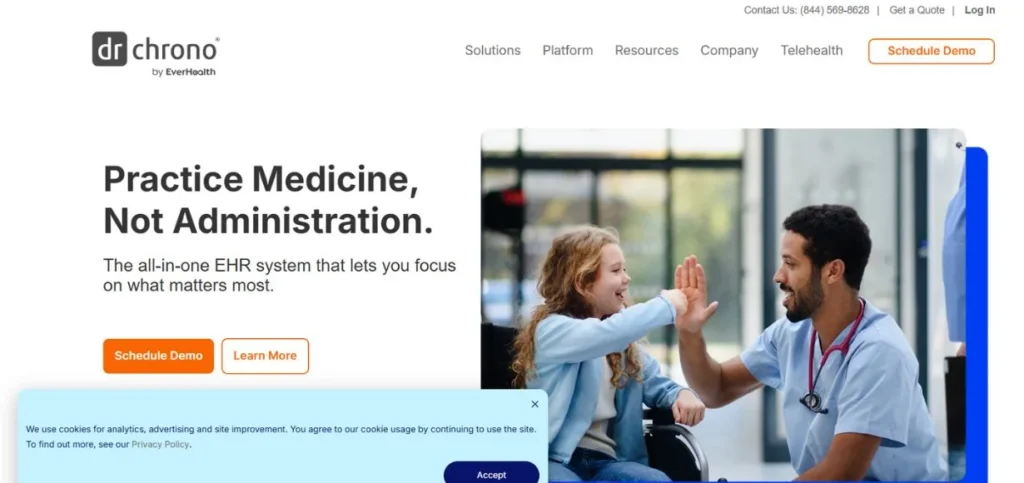
DrChrono is the next generation of a patient communication tools that is a seamless combination of electronic health records and patient engagement functionalities. It is a cloud-based platform providing an entire healthcare management system that is based on patient communication, booking of appointments, billing, and clinical documentation. DrChrono has a following, especially with independent practices and small healthcare groups that simply require an all-encompassing solution, without having to deal with the intricacy of systems at an enterprise level.
The platform is available in both iPad and web-based applications, which makes it accessible on different devices. The patient portal of DrChrono enables patients to view their health records, communicate with providers, and manage their healthcare experience in one easy-to-use portal.
Key Features:
- Integrated EHR system
- Cloud-based accessibility
- Mobile-optimized platform
Pros:
- Total healthcare solution.
- iPad-friendly interface
- Flexible pricing options
Cons:
- Learning curve required
- Weak customization offered.
- Occasional sync issues
Best For: Independent
Pricing: Starts at $199/month
Website: https://drchrono.com
7. Athenahealth Patient Portal
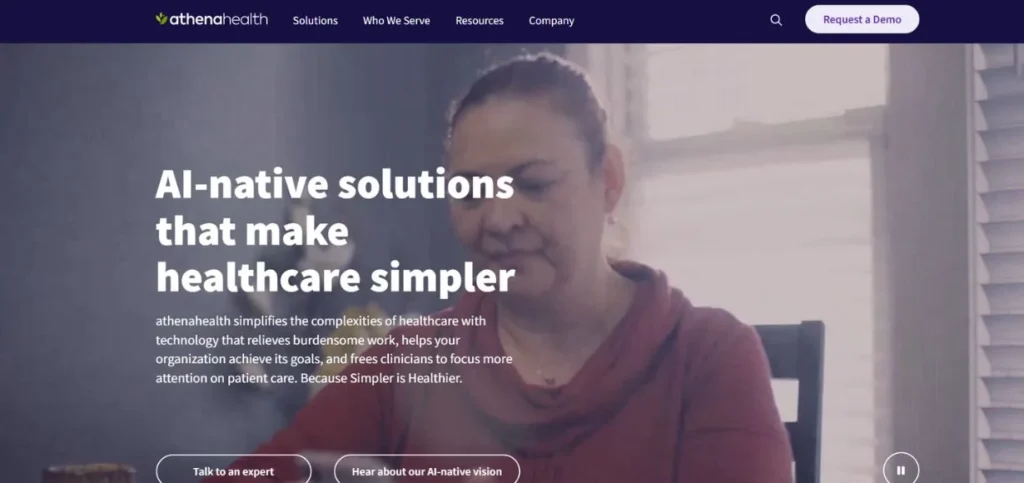
Athenahealth’s Patient Portal is one of the most sophisticated patient communication tools available, designed to work seamlessly with Athenahealth’s comprehensive practice management and electronic health record systems. This powerful platform will provide patients with full access to health data, such as test results, medication lists, visit summaries, and care plans. The portal enables safe communication between patients and their healthcare teams, in which information and questions can be shared efficiently.
One of the strongest features of the portal developed by Athenahealth is its integration aspects, as the portal can connect with numerous healthcare systems and third-party applications to see the overall picture of the health of the patient. Other advanced capabilities, such as population health management tools and care gap identification, are also available on the platform.
Key Features:
- Full access to health information.
- Well-developed integration features.
- Health management of the population.
Pros:
- Sophisticated feature set
- High-quality system integration.
- Well-developed analytics.
Cons:
- High implementation cost
- Complex setup process
- Needs technical experience.
Best For: Enterprise
Pricing: Custom pricing only
Website: https://athenahealth.com
8. NextGen Patient Portal
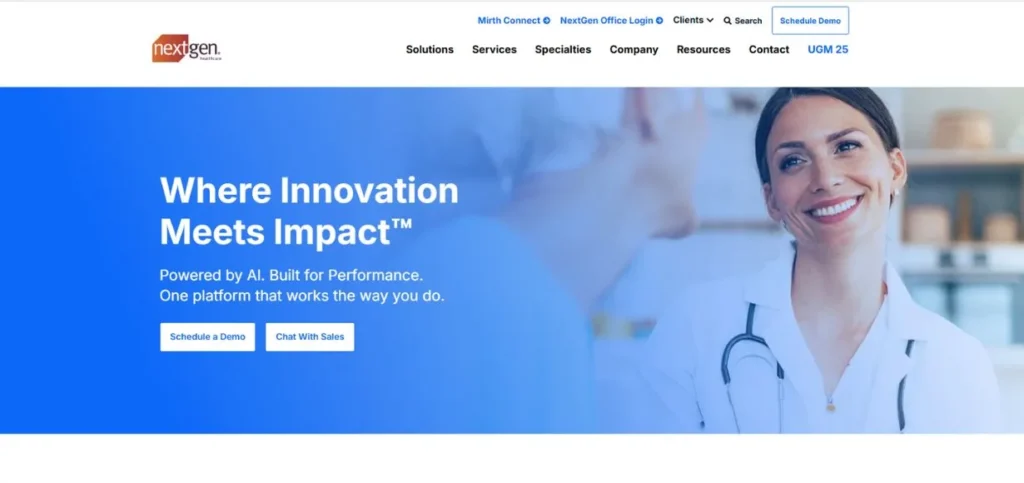
NextGen Patient Portal is a comprehensive patient communication tool that focuses on providing patients with easy access to their health information and the healthcare team. This portal, based on NNextGen’s healthcare technology platform, provides many features best suited to increase patient engagement and satisfaction. The platform enables patients to access their medical history, communicate safely with clinicians, book appointments, and manage their medications in a single convenient location.
The customization opportunities of NextGen are especially powerful in that the portal enables healthcare practices to customize the patient experience to their needs and brand. Additionally, the platform offers powerful reporting and analytics solutions, enabling practices to measure patient engagement and assess the effectiveness of their communication.
Key Features:
- Individualized patient experience.
- Complete written medical history.
- Advanced reporting tools
Pros:
- Customizable platform to the highest.
- Powerful reporting skills.
- Incumbent healthcare technology.
Cons:
- High costs of implementation.
- Complicated process of configuration.
- Requires technical support
Best For: Large
Pricing: Contact for pricing
Website: https://nextgen.com
9. TigerConnect
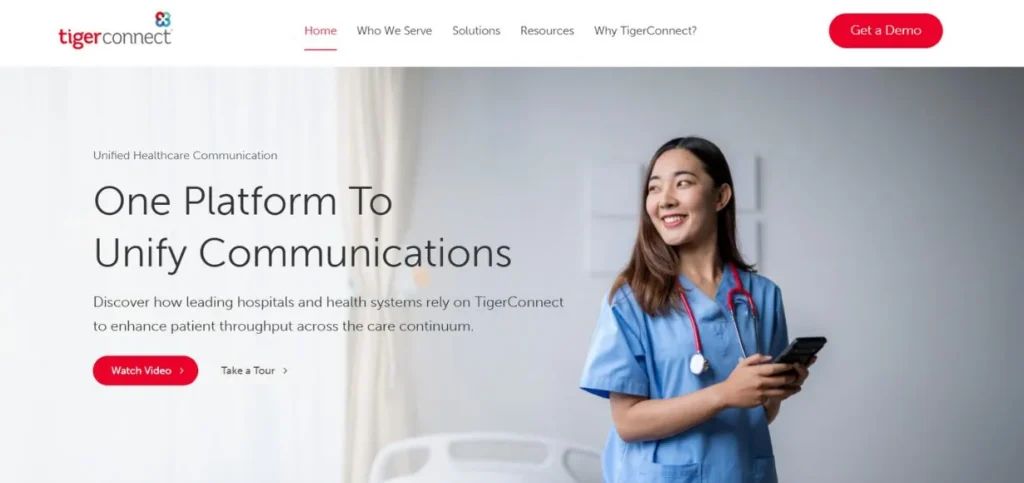
TigerConnect has transformed the tools of communication with patients with a primary emphasis on the secure and HIPAA-compliant messaging of healthcare organizations. TigerConnect was initially geared towards communication between healthcare professionals, but over time, it has been extended to provide the patient with the option of communication that has managed to retain its high standards of security. The platform has provided the ability to share files, voice, and real-time messaging in a secure healthcare setting.
TigerConnect is mostly used in hospital environments where urgent and secure communication is essential in patient care. The platform also interacts with the significant electronic health record systems and provides both mobile and desktop applications. The strong point of TigerConnect is the security features, which are appropriate for enterprises, and the reliability of the delivery of messages.
Key Features:
- Secure messaging on an enterprise basis.
- Communication platform in real-time.
- HIPAA file sharing.
Pros:
- Superior security functions.
- Reliable message delivery
- Hospital-grade platform
Cons:
- Limited patient features
- Higher cost structure
- Complex user interface
Best For: Hospitals
Pricing: Contact for pricing
Website: https://tigerconnect.com
10. Updox
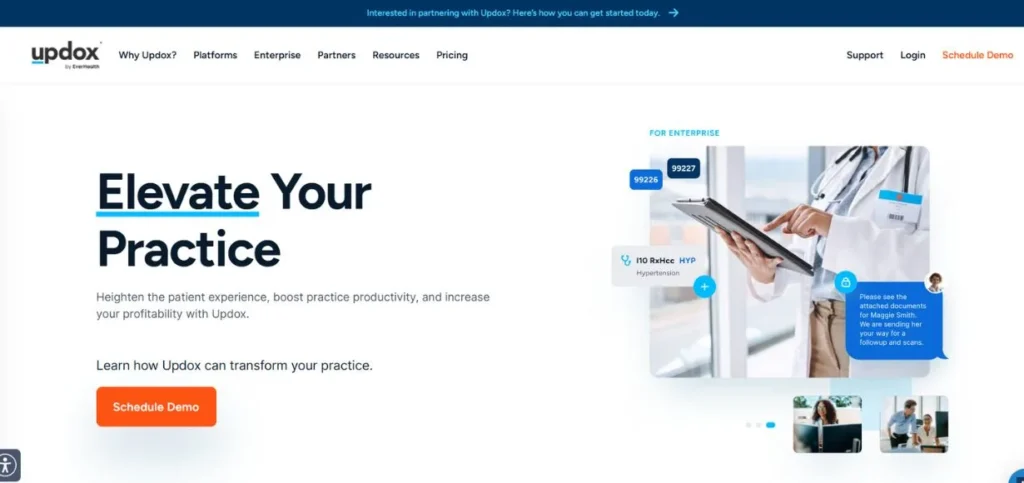
To complete our list of the best patient communication tools, we will mention Updox, which is aimed at making healthcare communication easier, whether it is for healthcare professionals or patients. It is an integrated product that integrates secure messaging and faxing, tools to engage the patient, and marketing automation. Updox has gained popularity among small to medium-sized healthcare organizations that require powerful communication solutions without having to deal with the complexity of an enterprise-level environment.
The platform provides automated appointment reminders, patient survey, and reputation management tools, which makes the platform a full patient engagement tool. The strength of Updox is that it is easy to use and can be implemented quickly to enable practices to begin improving their communication with patients. Great customer service and training material are also available on the site.
Key Features:
- Integrated communication system.
- Marketing automation tools
- Reputation management system.
Pros:
- Simple implementation procedure.
- Complete communication equipment.
- Excellent customer support
Cons:
- Limited advanced features
- Natural or fundamental customization.
- Pricing per user
Best For: Medium
Pricing: Starts at $15/user/month
Website: https://updox.com
Also Read: Top Revenue Cycle Management Software
How to Choose the Right Patient Communication Tools
When choosing the most appropriate patient communication tools, it is important to pay attention to several such factors:
- Practice Size: Select tools depending on the size of your practice, whether a small number of practitioners or a large hospital.
- Budget Requirements: Evaluate the various platforms in terms of upfront costs as well as monthly expenses.
- Integration Needs: Make sure that the tool can work with your current electronic health record system.
- Feature Requirements: Consider only those features that you require most, and do not choose excessively complicated solutions.
- User Experience: Choose tools that both the staff and the patients can easily operate.
Conclusion
Patient communication tools are changing healthcare for the better. They assist physicians and patients to remain in touch, save time, and enhance the quality of care. Our 10 discussed tools have various strengths as applied to various healthcare practices. Selecting tools of patient communication, consider your needs, budget, and technical requirements. The greatest weapon is the one that your patients will actually utilize, and that makes the job of your staff easier.
It is important to keep in mind that clinics require time and training to use these digital tools of communication. Begin with the fundamentals, make your team familiar with them, then increase your usage of features gradually. Healthcare messaging systems and telehealth communication platforms are here to stay. Patient portal software will continue to evolve and improve. The current practices that will embrace the tools will be placed in a better position to offer high-quality care to the patients in the future.
Frequently Asked Questions
1. What are the patient communication tools, and why do I require them?
Patient communication tools are digital tools that make communication easier between the doctor and the patients. You will need them as they will save time, enhance the quality of care, and make healthcare more convenient to all parties involved.
2. Do the patient communication tools appear to be secure and HIPAA compliant?
Yes, the reliable tools of communication with patients are created to address the HIPAA standards and ensure the safety of your health information. Nevertheless, it is essential to ensure that any tool that you select specifically refers to HIPAA compliance.
3. How much do patient communication tools cost?
Prices range all the way from free patient portals up to enterprise pricing of hundreds of dollars a month. Various telehealth communication platforms provide prices of between $15 and $50 per month.
4. Can patient communication tools replace in-person visits?
Although the use of patient communication tools will be able to support a large number of routine communications and follow-ups, they cannot substitute face-to-face visits. There are certain health problems that are yet to be examined physically and attended to.
5. What should I do when starting to communicate with patients?
The first step is to inquire of your healthcare provider whether they have patient portal software or healthcare messaging systems. Otherwise, visit the possibilities that we have already discussed and pick one of them that would suit your needs and finances.